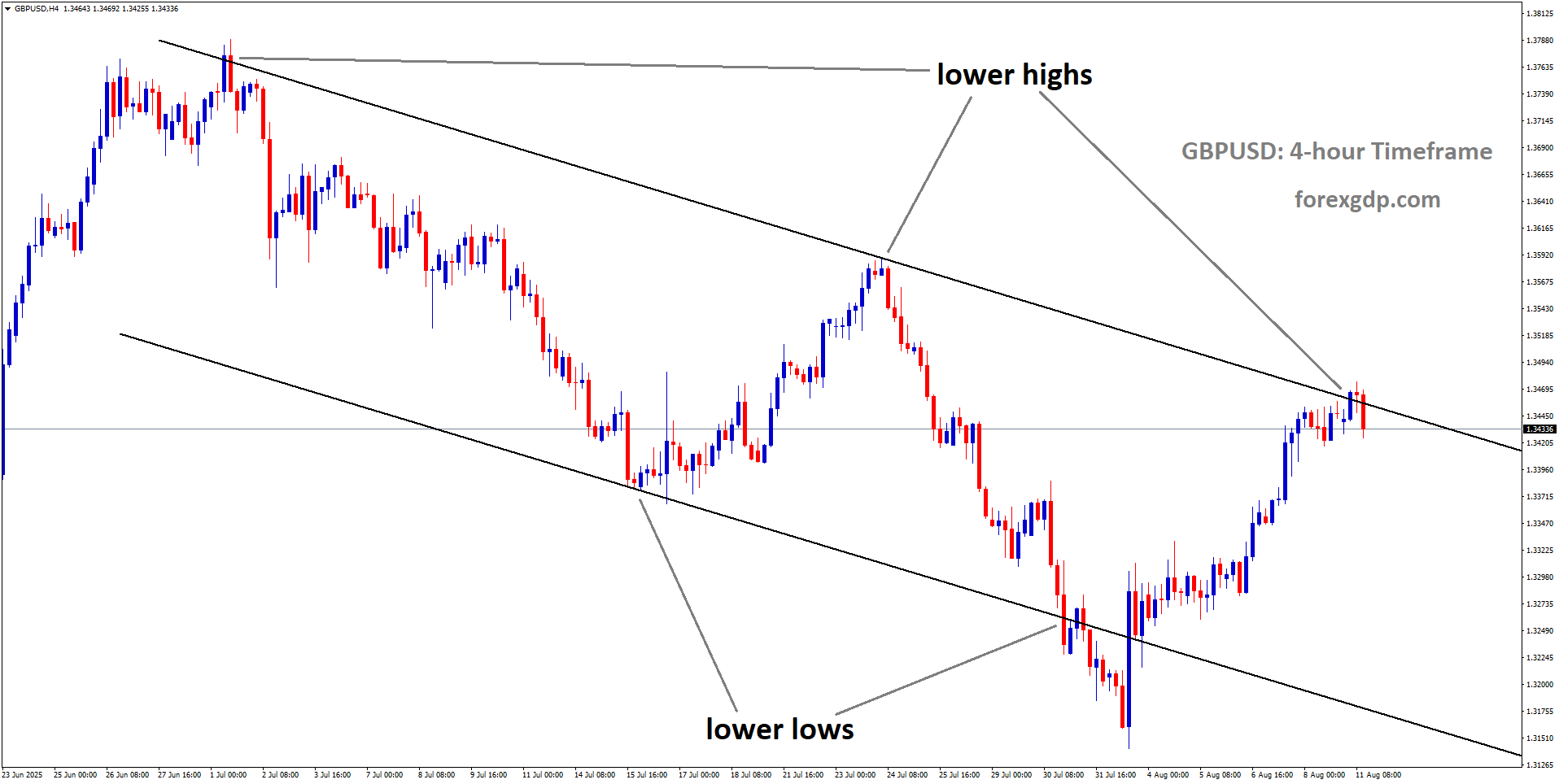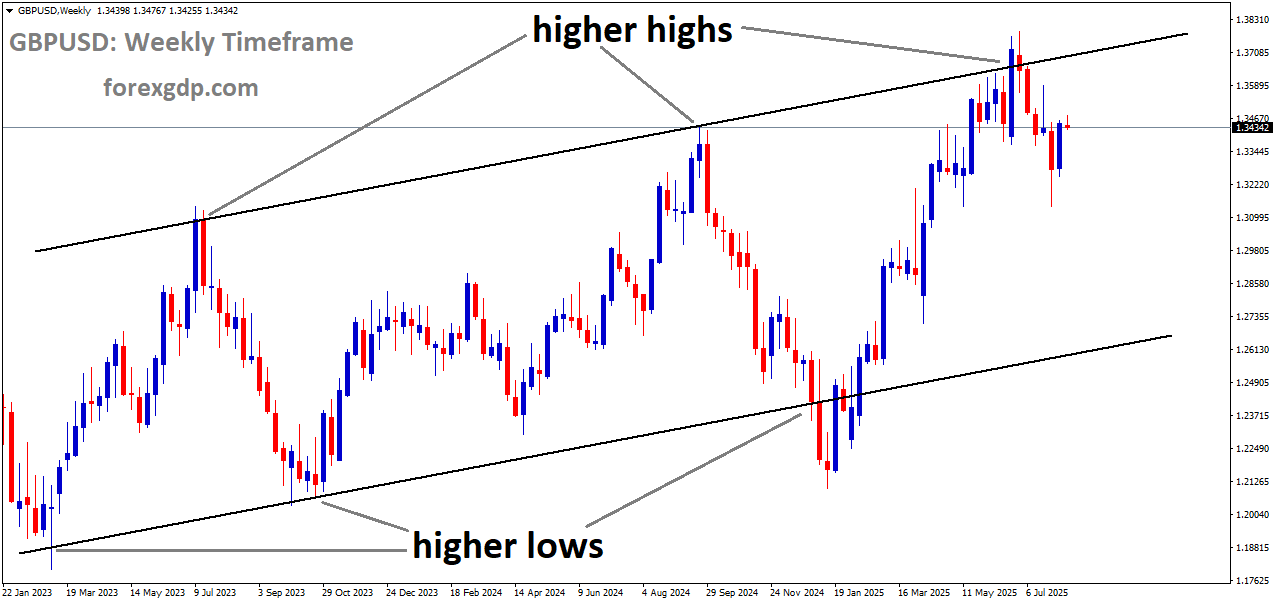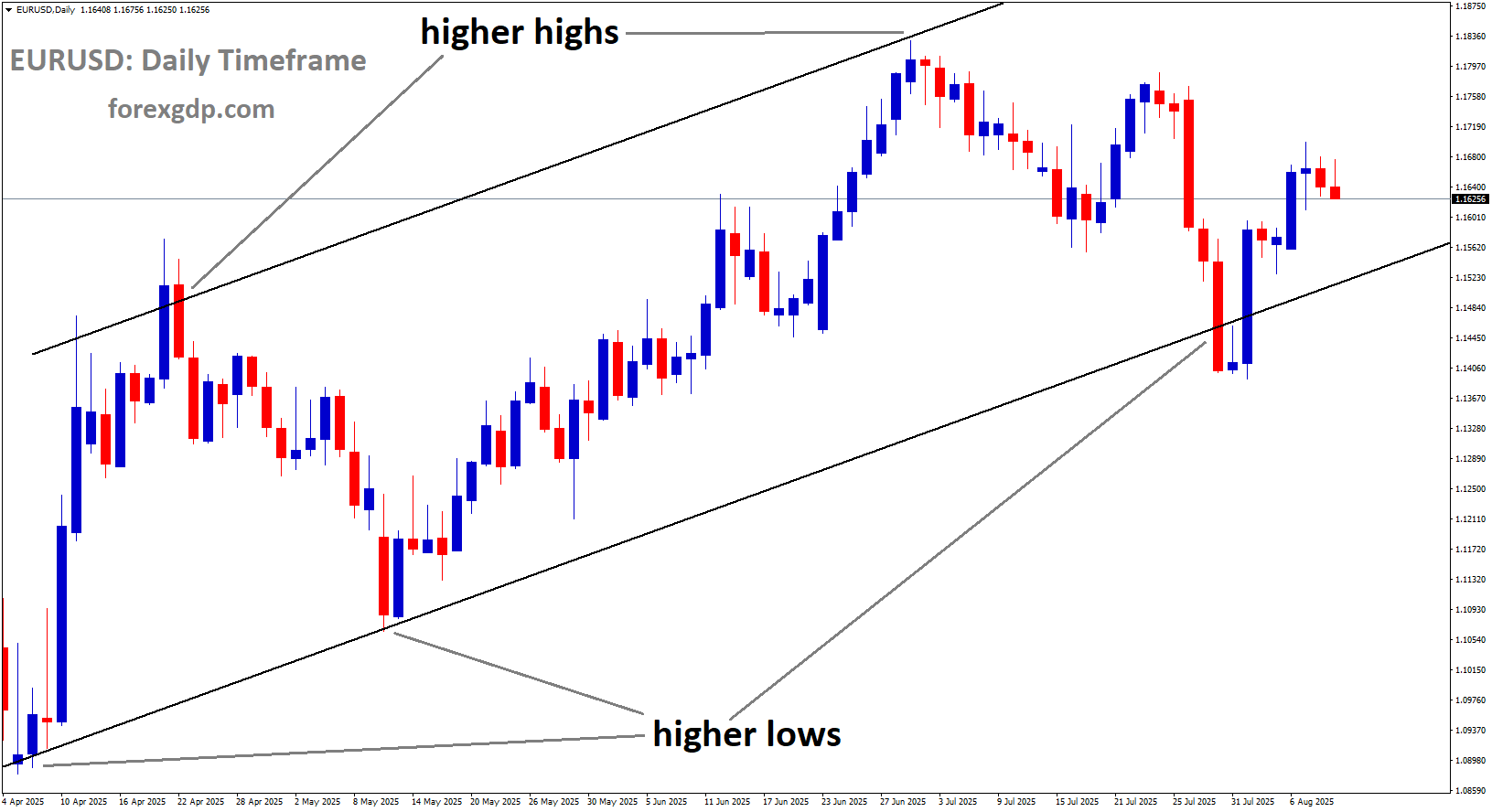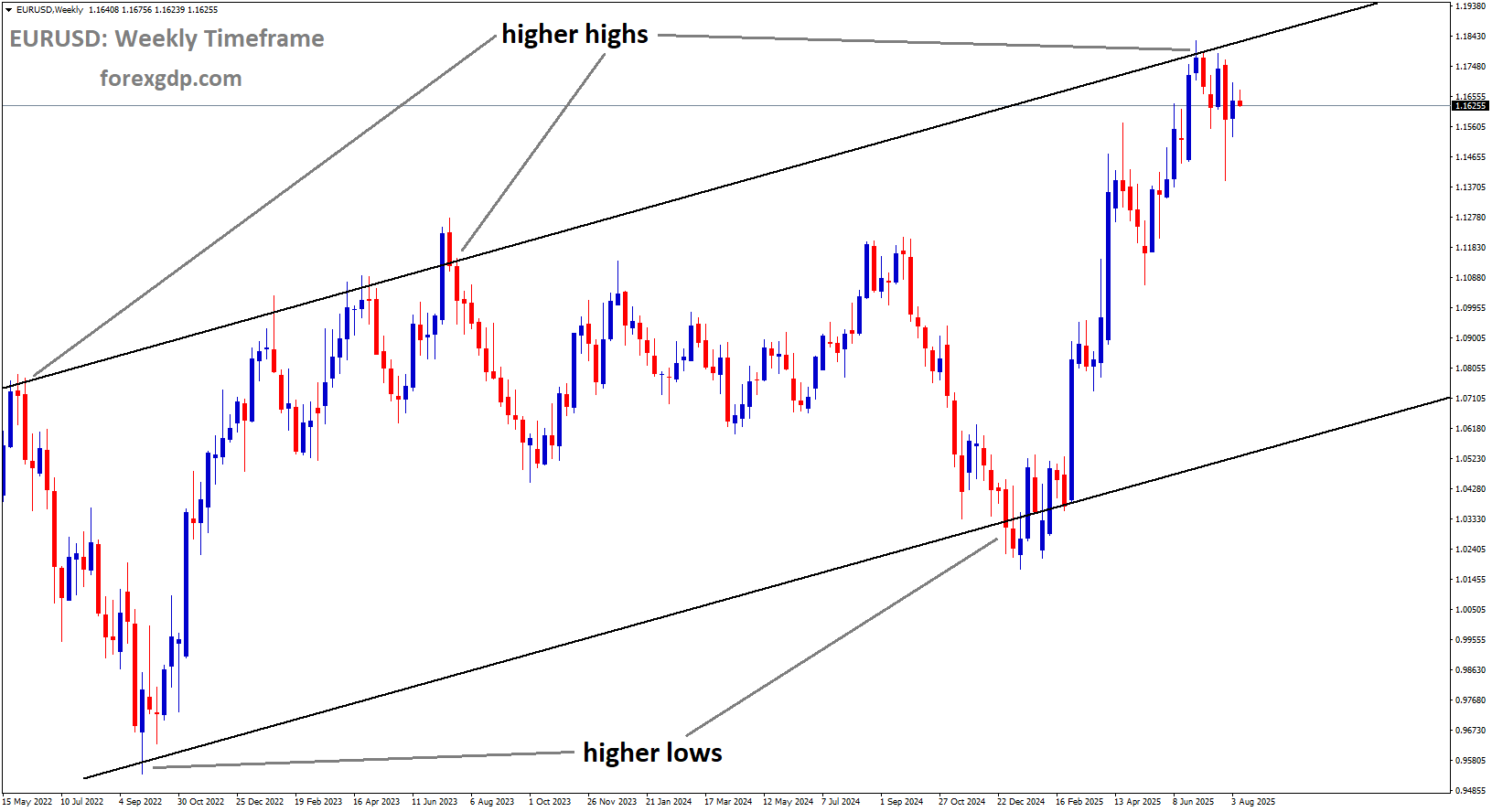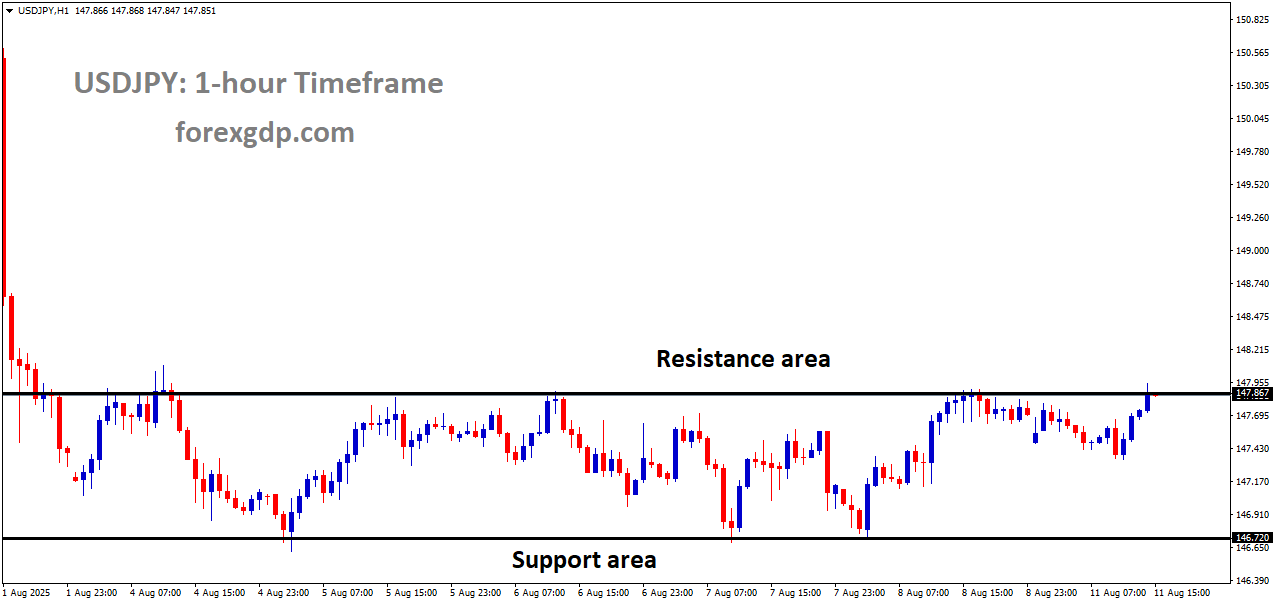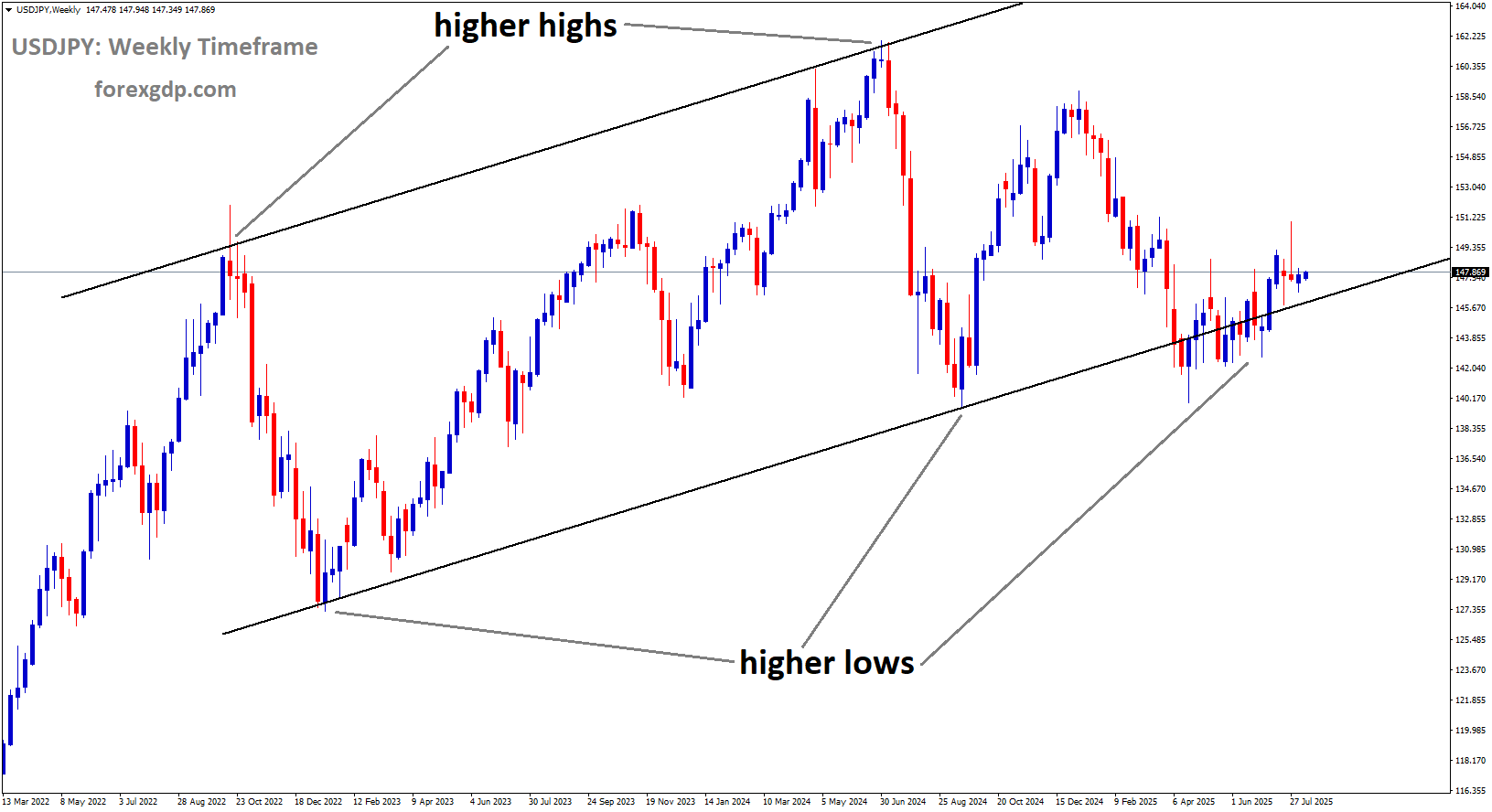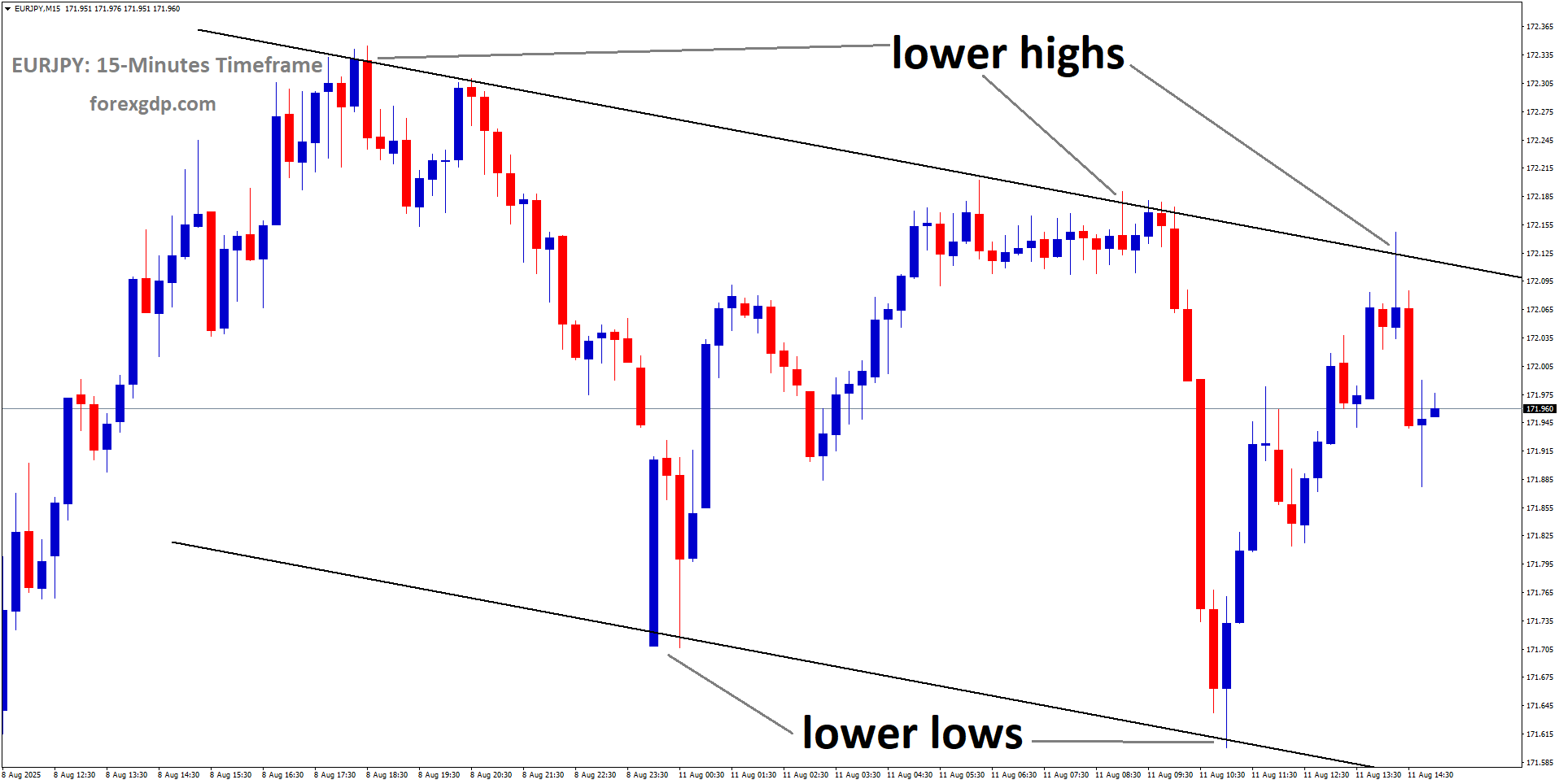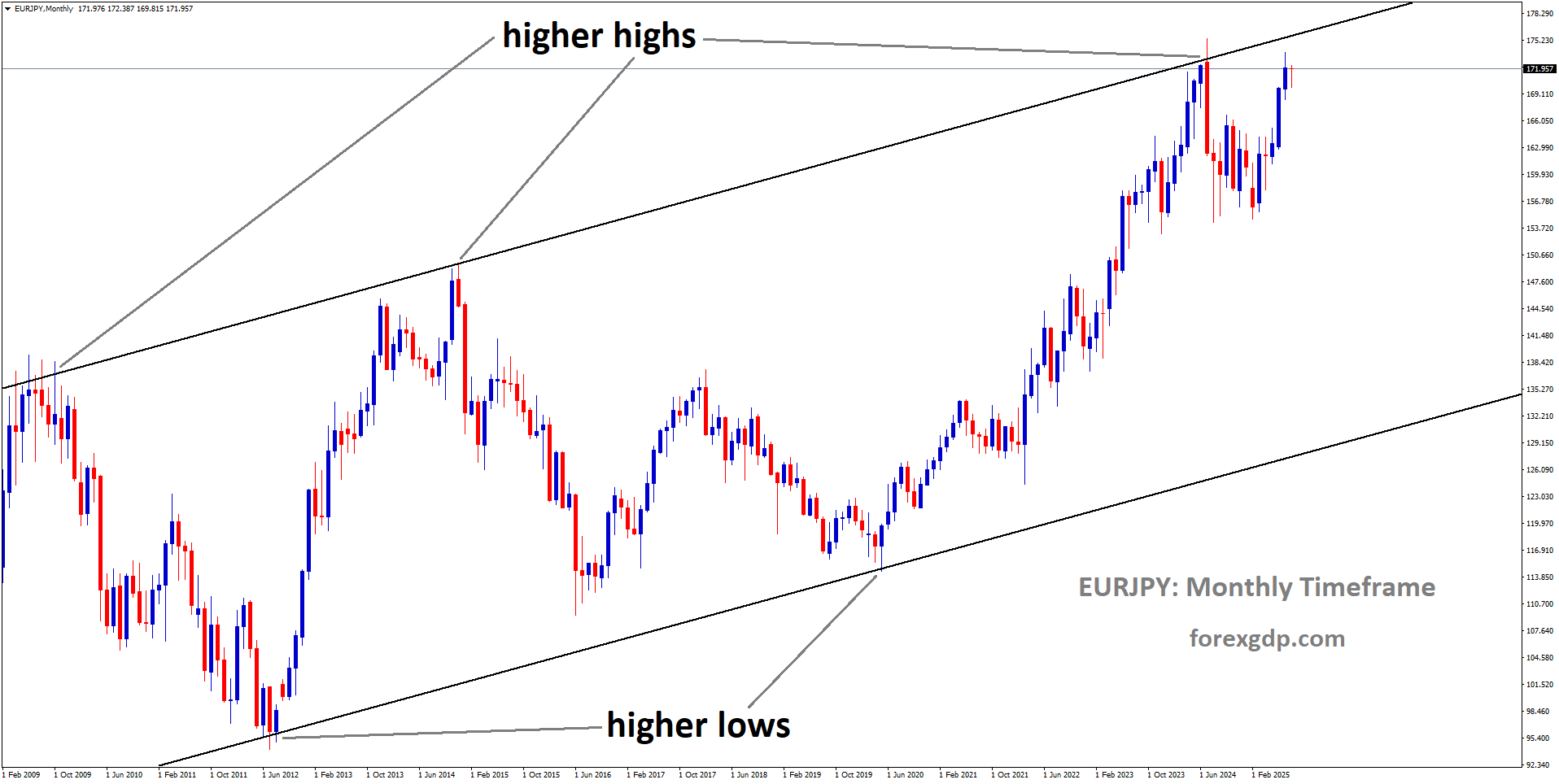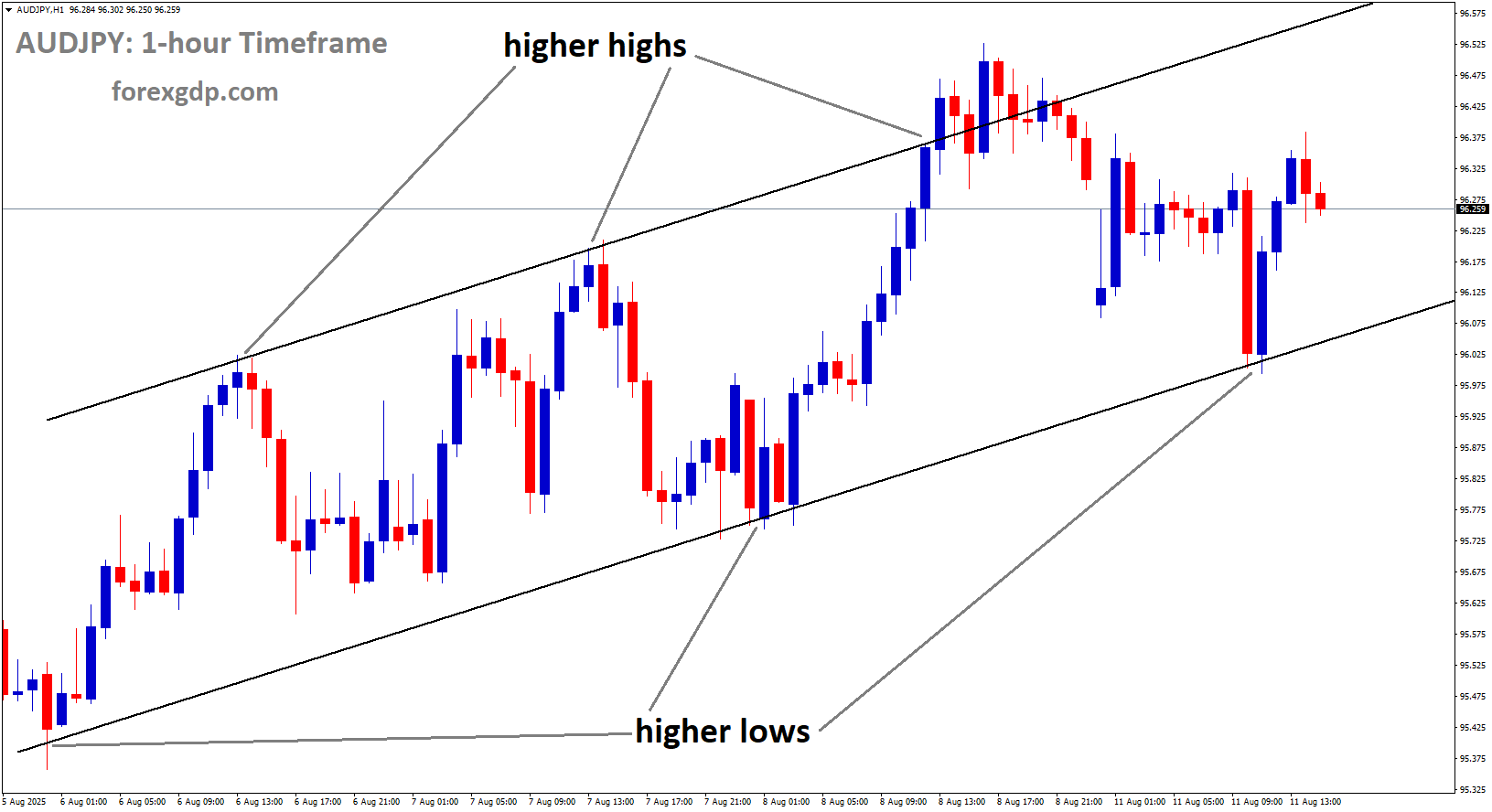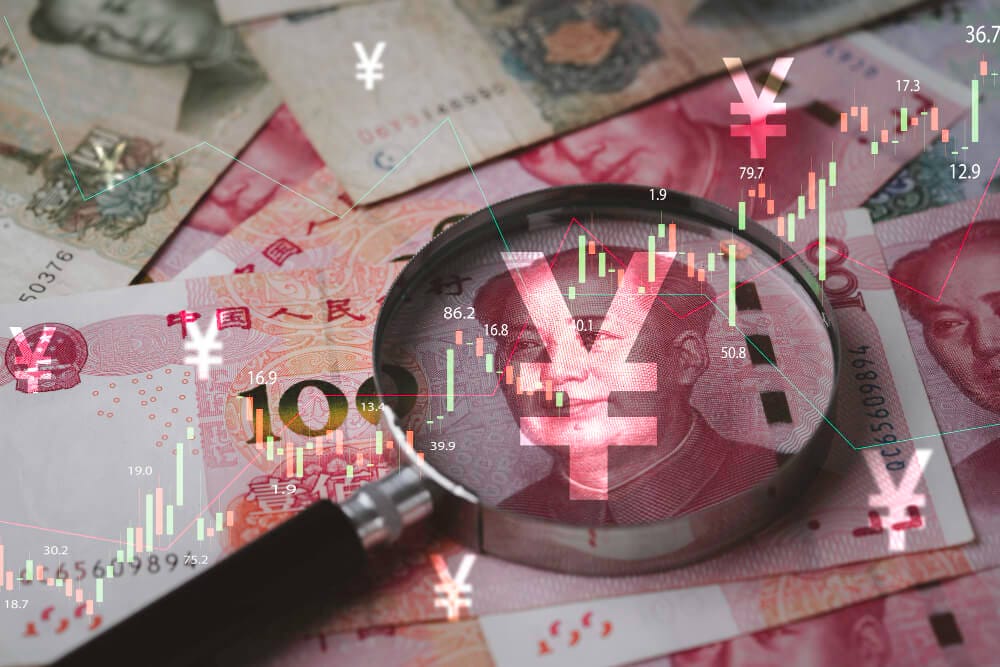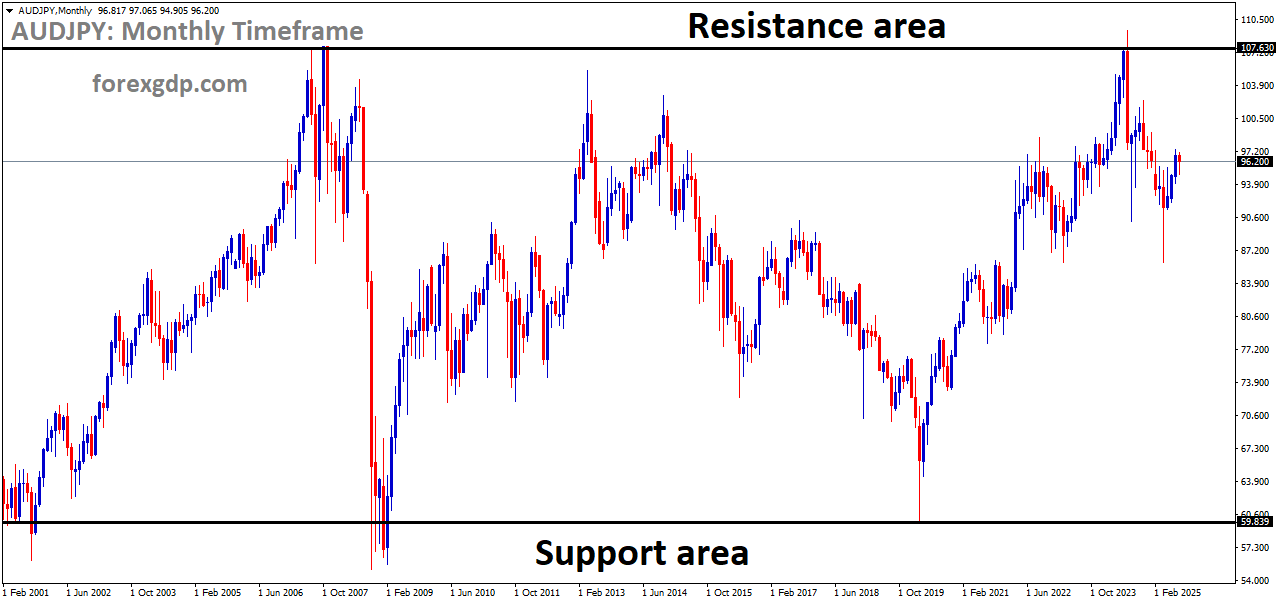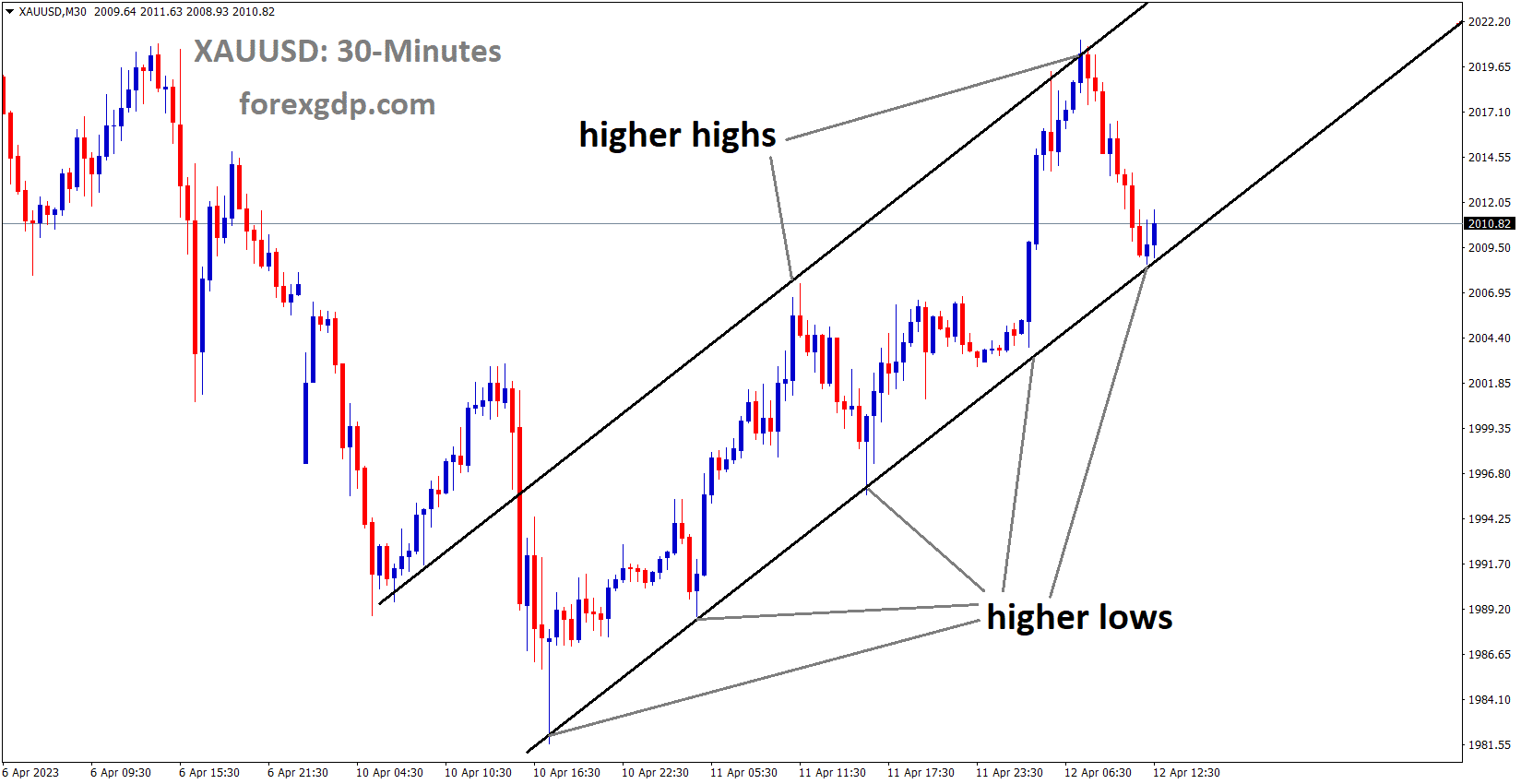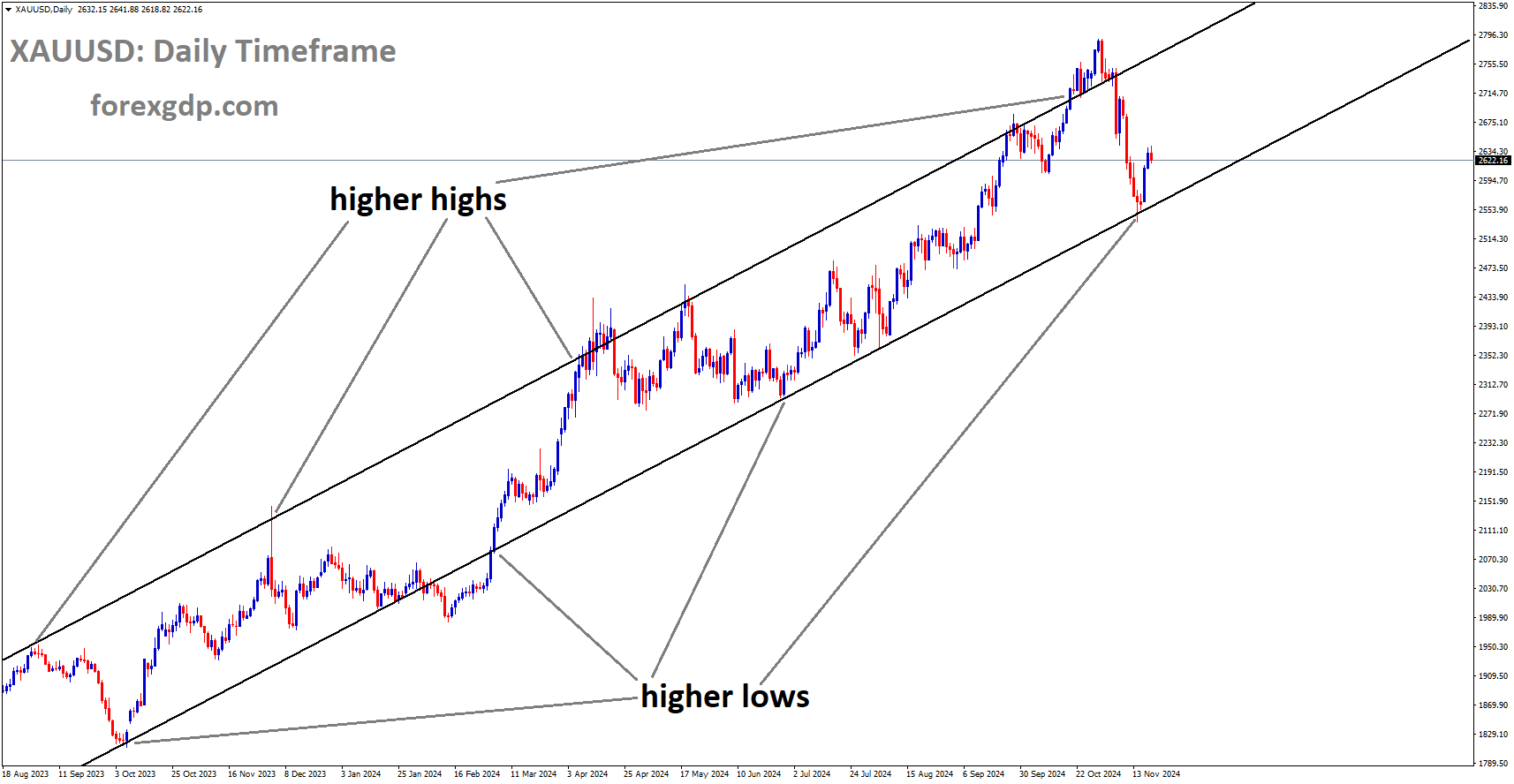GBPUSD is moving in a descending channel, and the market has reached the lower high area of the channel
Daily Forex Trade Setups Aug 11, 2025
Stay on top of market trends with our Daily Forex Trade Setups (Aug 11, 2025)
GBPUSD Climbs Higher as Markets Await Crucial UK and US Economic Reports
The Pound Sterling has been showing strength recently, pushing higher against the US Dollar as growing expectations of interest rate cuts by the US Federal Reserve continue to weigh on the Greenback. At the same time, sentiment toward the British currency has improved as traders reassess the Bank of England’s approach to rate adjustments. Let’s break down what’s happening, why it matters, and what’s coming next for both currencies.
Why the US Dollar is Losing Ground
One of the biggest factors pulling the US Dollar lower is the strong belief among investors that the Federal Reserve will start reducing interest rates soon. Recent comments from Fed officials have fueled this view, especially after weaker labor market data signaled that the US economy might be slowing down.
Fed Governor Michelle Bowman’s statement over the weekend reinforced this sentiment. She pointed to slower economic growth and signs of a softer job market as reasons to begin gradually moving away from the Fed’s restrictive policy stance. Bowman even mentioned the possibility of three rate cuts this year if conditions continue to justify it.
This shift in tone is significant because when interest rates drop, the yield advantage of holding the US Dollar often shrinks, making it less attractive to investors compared to other currencies like the Pound Sterling.
The Pound Sterling’s Winning Streak
The British currency has been on a roll, notching up gains for five consecutive trading days. The optimism around the Pound is partly due to reduced market expectations for rapid rate cuts from the Bank of England.
Last week, the Bank of England lowered its benchmark interest rate by 0.25%, bringing it down to 4%. However, officials made it clear that their approach to monetary easing would be slow and measured. BoE Chief Economist Huw Pill emphasized that while there might still be some room to lower rates further, the pace of future reductions would likely be slower than what markets had previously anticipated.
This more cautious stance has led traders to push back their expectations for the next rate cut to February, instead of December as initially thought. The perception that UK rates could stay higher for longer compared to the US has given the Pound an extra boost.
Key Economic Reports to Watch
Both the UK and the US have important economic data releases scheduled that could influence the direction of their currencies.
UK Labor Market Data
Investors will be paying close attention to the UK employment report for the three months ending in June. This will provide insight into whether companies are still reluctant to hire due to higher social security contributions and overall cost pressures.
-
The unemployment rate is expected to remain steady at 4.7%.
-
Wage growth, excluding and including bonuses, is forecast to slow slightly compared to the previous reading.
A resilient labor market could support the Pound by reducing the urgency for further rate cuts from the Bank of England.
US Inflation Data
In the US, the Consumer Price Index (CPI) report for July will be closely monitored. Inflation numbers remain a key factor in the Fed’s decision-making process.
-
Both the headline CPI and the core CPI, which excludes volatile food and energy prices, are expected to rise at a slightly faster pace than before.
If inflation comes in stronger than expected, it could slow down the Fed’s rate-cut plans, potentially lending some support to the Dollar. However, if the data confirms a steady cooling trend, expectations for multiple cuts this year will remain strong, keeping pressure on the currency.
Investor Sentiment and Market Outlook
Right now, the market narrative is clear: investors are betting that the US will ease monetary policy faster than the UK. This difference in outlook is one of the main drivers pushing the Pound higher.
In addition, the political and economic environment in the UK has been relatively stable compared to earlier this year, which has also helped the currency recover. While challenges remain—such as controlling inflation and supporting growth—the cautious stance of the BoE has reassured investors that sudden policy shifts are unlikely.
GBPUSD is moving in an Ascending channel, and the market has fallen from the higher high area of the channel
On the US side, the combination of weaker job growth and dovish signals from Fed officials has shifted sentiment decisively toward rate cuts. The key question now is whether upcoming data will confirm this path or force the Fed to reconsider its timing.
Final Summary
The recent strength in the Pound Sterling against the US Dollar is largely the result of diverging interest rate expectations between the Bank of England and the Federal Reserve. While the Fed appears ready to start cutting rates soon due to slower economic growth and a cooling labor market, the BoE is signaling a slower, more cautious approach to monetary easing.
This difference in policy outlook has made the Pound more attractive to investors, especially as UK rate cut expectations are being pushed further into the future. However, upcoming UK employment data and US inflation figures could shift the balance if they significantly surprise markets.
For now, the momentum is with the Pound, but currency markets can change quickly when fresh economic data and central bank signals emerge. Traders and investors will be keeping a close eye on both sides of the Atlantic in the days ahead to see if this trend continues or takes a new direction.
EURUSD Holds Steady as Markets Stay Quiet, All Eyes on Upcoming US CPI
The euro started the week on a positive note, drawing strength from renewed optimism around global peace efforts and ongoing trade discussions. While Monday’s trading atmosphere was calm and somewhat slow, underlying market sentiment leaned towards a “risk-on” approach, putting mild pressure on the US dollar.
Several global factors combined to shape the mood, from diplomatic developments in Eastern Europe to high-stakes trade negotiations between the United States and China. With key economic data on the horizon, especially from the US, traders remained watchful for any signals that could influence currency movements in the days ahead.
EURUSD is moving in an Ascending channel
Hopes for Peace Fueling Positive Sentiment
One of the major factors supporting the euro was the growing expectation of progress towards a peace deal in Ukraine. Ahead of an anticipated meeting between US President Donald Trump and Russian President Vladimir Putin, there was increasing pressure from European leaders to ensure Ukraine’s President Volodymyr Zelensky would be included in any discussions.
This political backdrop injected a sense of stability into the market, as traders hoped diplomatic talks could reduce geopolitical tensions. For the euro, any step toward peace in the region often translates into greater investor confidence, as stability tends to benefit European markets and its shared currency.
While markets remained cautious, the very idea of active dialogue between global powers brought a refreshing shift in sentiment after months of uncertainty.
Trade Negotiations Keeping Markets on Edge
Another closely followed storyline was the ongoing trade discussions between the US and China. With the August 12 deadline fast approaching, negotiators were working to avoid a scenario where hefty reciprocal tariffs would be reimposed.
The sticking point appeared to be around US controls on artificial intelligence chips — a sensitive and strategic area for both economies. Despite these challenges, there was an underlying belief in the market that both sides might agree to extend the trade truce, preventing an immediate escalation.
A potential deal, or even an extension, would likely boost global trade confidence and help riskier assets, including the euro, to maintain momentum. However, a breakdown in talks could easily reverse the current optimism, which is why traders were closely monitoring updates.
Quiet Economic Calendar and Market Caution
Monday’s European economic calendar was relatively empty, with only Italy’s consumer inflation and trade balance data released. Inflation numbers were expected to confirm a slight annual slowdown, while trade figures suggested an improvement in the country’s surplus. Despite these releases, neither was anticipated to trigger a strong market reaction.
In the US, there was no major economic news until Tuesday, when the Consumer Price Index (CPI) report for July was scheduled for release. Inflation trends in the US are particularly important because they shape expectations for the Federal Reserve’s interest rate decisions.
Why CPI Matters:
-
Higher-than-expected inflation could lead the Fed to reconsider any planned interest rate cuts.
-
Lower-than-expected inflation could encourage rate-cut speculation, weakening the US dollar.
Traders were therefore holding off from making big moves until they had clearer insights into the US inflation trajectory.
A Day of Rangebound Trading
The start of the week saw most major currencies trading within narrow ranges. With Japanese markets closed for a holiday, trading volumes were notably thin. This lack of activity, combined with a light economic calendar, kept price movements subdued.
The US Dollar Index, which measures the greenback against a basket of major currencies, showed modest weakness but stayed confined within the same levels it had traded in over the previous two sessions. The limited volatility reflected a market essentially waiting for more concrete economic or political developments before committing to any big shifts.
Global Focus on Upcoming US Data
Tuesday’s CPI release is set to be the highlight of the week for many traders. Analysts are expecting annual inflation to have increased compared to previous months, raising questions about whether rising prices are a result of recent tariffs or broader economic trends.
If the data points to stronger-than-expected inflation, the US dollar could gain strength as investors anticipate a more cautious Federal Reserve. On the other hand, if the numbers fall short, the dollar might weaken, giving other currencies, including the euro, more room to advance.
Investor Sentiment: Cautious Optimism with Eyes on Diplomacy
While Monday may have been slow, the undercurrent of optimism was clear. The combination of peace hopes in Ukraine and the potential for progress in US-China trade talks offered enough positive energy to lift market mood, even without any major economic surprises.
Still, this optimism remains fragile. Political negotiations can be unpredictable, and any setback — whether in trade talks or peace discussions — could quickly dampen sentiment. As such, investors are balancing hope with caution, ready to adjust their positions if the tone shifts.
Key Takeaways for the Week Ahead
-
Peace Negotiations: Any sign of progress in talks involving Ukraine, Russia, and Western leaders will be closely watched for its potential to boost European stability and the euro.
-
Trade Talks: The August 12 deadline in US-China negotiations is critical; developments here could have ripple effects across global markets.
-
US CPI Data: The most important short-term driver for currency markets, especially for determining the Federal Reserve’s next steps.
-
Market Volumes: With summer trading often quieter, sudden news events could trigger outsized market reactions.
EURUSD is moving in an uptrend channel
Final Summary
The euro began the week on a steady upward path, buoyed by renewed optimism over peace efforts in Ukraine and guarded hope surrounding US-China trade talks. While Monday’s trading was calm and rangebound, the tone leaned positive as markets awaited more decisive cues from upcoming US inflation data.
For now, investor sentiment sits in a delicate balance — encouraged by signs of diplomacy but fully aware of how quickly global politics can shift. The next few days, especially with the release of CPI figures, could be pivotal in determining whether the euro’s recent gains hold or give way to renewed dollar strength.
USDJPY Holds Steady with Yen Caught in BoJ Uncertainty
The Japanese Yen has been moving in a tight range recently, with traders holding back from making any bold moves. While some factors point toward potential strength in the currency, others are keeping it under pressure. This mix of influences has left the Yen trading sideways, especially during the start of the week when market activity was quieter due to thin holiday trading.
Let’s break down what’s really going on with the Yen right now, why it’s caught in this back-and-forth pattern, and what events traders are keeping an eye on.
USDJPY is moving in a box pattern, and the market has reached the resistance area of the pattern
Why the Japanese Yen Feels Stuck in Place
The current mood around the Japanese Yen is being shaped by a balance of opposing forces. On one hand, expectations about the Bank of Japan’s (BoJ) next moves are giving it some support. On the other hand, global market sentiment and uncertainty in other parts of the world are holding it back.
Interest Rate Expectations Are Driving Speculation
Many investors believe that the BoJ will raise interest rates before the year ends. This belief stems from recent policy hints suggesting the central bank is slowly preparing to move away from its ultra-loose monetary stance. A rate hike would normally boost the Yen by making Japanese assets more attractive to investors.
However, the BoJ has also shown caution. Policymakers have expressed concerns about external risks, such as how higher US tariffs might affect Japan’s economy. This uncertainty has slowed down any rush toward a rate hike, leaving traders guessing about the exact timing.
The Federal Reserve’s Role in the Mix
While Japan debates rate hikes, the US Federal Reserve seems to be leaning toward cutting rates later this year. Many analysts expect the first cut to come as soon as September. This difference in direction between the BoJ and the Fed could work in the Yen’s favor, since lower US interest rates tend to weaken the Dollar.
Yet, even with this advantage, the Yen hasn’t made a clear break higher. That’s because other global factors are weighing in, keeping the currency from moving strongly in one direction.
Risk Sentiment and Global Events Are Adding Uncertainty
Currencies like the Japanese Yen often act as safe havens during times of uncertainty. When global markets are nervous, traders flock to the Yen for safety. But when investors feel more confident and shift toward riskier assets, the Yen tends to lose ground.
Markets Are in a Cautious Risk-On Mood
Recently, major Asian stock markets and US equity futures have been trending upward. This reflects a “risk-on” attitude, where investors are more willing to take chances. That normally puts pressure on safe-haven currencies like the Yen.
Still, not everything is smooth sailing. Upcoming deadlines and diplomatic meetings are keeping traders from going all-in on riskier bets. For example, the US is set to make a decision on tariffs against China, and political leaders from the US and Russia are meeting to discuss the ongoing Ukraine situation. These events could shift market sentiment quickly, and that possibility is helping the Yen retain some strength.
The US Dollar’s Own Struggles Are Helping the Yen Hold Steady
The US Dollar has recently lost some ground, and that has given the Yen a bit of breathing room. The main reason for this Dollar weakness is growing confidence that the Federal Reserve will cut rates more than once this year.
Dovish Fed Comments Have Strengthened Rate Cut Bets
Over the weekend, a Fed governor hinted that three rate cuts could be appropriate in 2025, pointing to signs of a weaker US labor market. This has led traders to price in a very high chance of a September rate cut. When the Fed lowers rates, it usually makes the Dollar less attractive to investors, which can indirectly support other currencies like the Yen.
Data and Events Could Shake Things Up
The upcoming week is relatively light on US economic releases, but there are still key moments to watch. US inflation data is due soon, and this will likely influence how quickly the Fed acts on rate cuts. On the Japanese side, the country’s GDP report will also be in focus.
USDJPY is moving in an uptrend channel, and the market has reached the higher low area of the channel
Both of these releases, along with other scheduled US economic figures later in the week, could provide the push that finally breaks the USD/JPY pair out of its recent range. Until then, traders are likely to stay cautious, waiting for a clearer picture before taking strong positions.
Final Summary
Right now, the Japanese Yen is caught between competing influences. Hopes for a BoJ rate hike later this year and expectations of US rate cuts are giving it some underlying support. At the same time, a mild risk-on mood in global markets and lingering uncertainties about Japan’s policy direction are keeping it from making strong gains.
Global politics and economic data releases in the coming days could provide the trigger for a bigger move, but until then, the Yen is likely to continue its back-and-forth pattern. For traders, this means staying alert, watching for changes in sentiment, and keeping a close eye on central bank signals.
EURJPY Climbs Higher with Traders Eyeing ECB Standstill
The EUR/JPY currency pair has been attracting attention lately as it continues to rise for the second consecutive session. Several economic and geopolitical factors are playing a role in this upward movement, making it an interesting situation for traders and market watchers alike. Let’s break down what’s going on, why the Euro is getting stronger, and what’s happening with the Japanese Yen that could influence the pair in the coming days.
EURJPY is moving in a descending channel
Why the Euro is Showing Strength
The Euro has been riding a wave of positive sentiment recently, and a big part of this comes from the European Central Bank’s (ECB) current policy direction. In its most recent meeting, the ECB decided to keep key interest rates unchanged. This decision signals a sense of confidence that inflation is gradually stabilizing near the desired 2% target.
Rather than rushing into more rate cuts or hikes, the ECB has emphasized a “meeting-by-meeting and data-dependent” approach. In simpler terms, they want to take things slowly, carefully studying economic indicators before making the next move. This approach reassures investors that the central bank isn’t panicking, and it creates a stable environment that supports the Euro’s value.
A Boost from Geopolitical Optimism
Another factor helping the Euro is the improved global market sentiment. Recently, there has been growing speculation that the ongoing Ukraine-Russia conflict could be moving toward a possible resolution. Reports suggest that a high-profile meeting between Donald Trump and Vladimir Putin might take place next week. While nothing is confirmed, the mere possibility of diplomatic progress has lifted investor confidence across global markets, which in turn benefits the Euro.
Peace or even a reduction in tensions in Eastern Europe could have a ripple effect on the Eurozone economy by boosting trade stability, lowering energy market volatility, and encouraging investment flows.
The Bank of Japan’s Uncertain Path
On the other side of this currency pair, the Japanese Yen is facing its own set of uncertainties. While the Bank of Japan (BoJ) has been hinting at the possibility of interest rate hikes, the path forward isn’t entirely clear.
The minutes from the BoJ’s July meeting revealed that many board members still believe rate hikes are necessary at some point, despite global uncertainties. However, there’s a significant hurdle: concerns about how higher US tariffs could impact Japan’s domestic economy. Policymakers are cautious, and this hesitation limits the Yen’s ability to rally strongly against the Euro.
Mixed Signals from Policymakers
Adding to the uncertainty, the BoJ’s Summary of Opinions released last week painted a picture of divided views. While some members lean toward policy tightening, others remain wary of the potential downsides, especially in light of fragile global trade conditions. This split means traders are left guessing about the timing and pace of any future moves.
As long as this indecision continues, the Yen may struggle to gain sustained strength, which indirectly supports the EUR/JPY pair’s upward trend.
How These Factors Work Together
The EUR/JPY’s recent gains are not driven by one single reason but rather a combination of events and market psychology.
-
ECB Stability – The Euro benefits when the ECB signals a steady, measured approach to monetary policy.
-
Improved Sentiment – Hopes for a diplomatic breakthrough in the Ukraine-Russia conflict are lifting market confidence.
-
BoJ Uncertainty – The Japanese Yen is weighed down by unclear policy direction and concerns over external risks.
This mix of factors is pushing the pair higher, at least in the short term. However, the market’s mood can shift quickly depending on any fresh developments in central bank policies or geopolitical events.
EURJPY is moving in an Ascending channel, and the market has reached a higher high area of the channel
What Traders Are Watching Next
While the recent upward trend is notable, traders are keeping a close eye on several upcoming developments:
-
ECB Updates – Any new comments from the ECB that hint at changes to their pause strategy could impact the Euro.
-
BoJ Announcements – If the Bank of Japan provides a clearer path toward rate hikes, it could give the Yen a short-term boost.
-
Geopolitical Headlines – The rumored Trump-Putin meeting and any follow-up actions will be closely watched for signs of reduced conflict in Eastern Europe.
The interplay between these factors will determine whether the EUR/JPY continues climbing or starts to level off.
Final Summary
The EUR/JPY pair’s recent rise is the result of a perfect blend of Euro-friendly developments and uncertainty around the Yen. The ECB’s decision to hold rates steady, coupled with hopes for progress in the Ukraine-Russia situation, has fueled Euro strength. Meanwhile, the BoJ’s mixed signals and caution over economic risks are preventing the Yen from mounting a strong comeback.
For now, the Euro seems to have the upper hand, but currency markets are notoriously fast-moving. Traders will be watching central bank statements and global headlines closely, knowing that a single shift in sentiment could quickly change the pair’s direction.
AUDJPY Weakens as Market Anticipates RBA Interest Rate Reduction
The AUD/JPY currency pair recently saw a pause in its upward momentum as traders brace for the upcoming Reserve Bank of Australia (RBA) interest rate decision. With expectations building for a rate cut, market sentiment has shifted, affecting the performance of the Australian Dollar (AUD) against the Japanese Yen (JPY).
AUDJPY is moving in an Ascending channel, and the market has rebounded from the higher low area of the channel
Why Traders Expect The RBA To Cut Rates
Over the past few months, Australia’s economic indicators have shown signs of easing, prompting speculation that the RBA might take a softer approach to monetary policy. Core inflation fell to 2.7% in June, bringing it comfortably within the RBA’s target range of 2–3%. This decline in inflation, coupled with a rise in unemployment and slower wage growth, has led many market participants to predict that the central bank will opt for a 25 basis point rate cut.
Such a move would bring the Official Cash Rate down from 3.85% to 3.6%, potentially providing some stimulus to the economy. While this expectation has been widely shared among traders, the RBA’s cautious tone in previous meetings leaves room for uncertainty.
A Shift In RBA’s Communication Approach
In July, the RBA adopted a more balanced tone regarding inflation risks. Governor Michele Bullock highlighted that the central bank would no longer provide forward guidance on interest rates. This means market participants can no longer rely on pre-meeting hints and must instead focus on incoming data and board decisions made on the day.
By avoiding strong signals ahead of policy meetings, the RBA keeps its options open and reduces the risk of locking itself into a path that may not align with evolving economic conditions. This approach has increased market unpredictability, making upcoming meetings even more closely watched.
The Japanese Yen’s Role In The Current Movement
While the Australian Dollar has been under pressure due to domestic policy expectations, the Japanese Yen has found some support from its own central bank developments. The Bank of Japan (BoJ) has been facing questions about whether it will continue to gradually raise interest rates.
Minutes from the BoJ’s July meeting indicated that most board members still see the case for further rate increases. This stance reflects concerns about keeping inflation stable and ensuring the domestic economy remains balanced.
Mixed Sentiment On BoJ’s Next Move
Despite this inclination toward additional hikes, the BoJ’s Summary of Opinions reveals lingering doubts. Policymakers remain cautious about potential negative effects from higher US tariffs on Japan’s economy. These uncertainties have tempered market confidence in an immediate rate hike, keeping the Yen’s momentum in check.
However, even with this caution, the Yen has gained some ground against the Australian Dollar, contributing to the recent dip in AUD/JPY. Traders are essentially weighing the potential policy actions from both central banks, and at the moment, the RBA’s expected rate cut appears to be the more dominant driver.
What This Means For Traders And Investors
The recent drop in AUD/JPY serves as a reminder of how central bank decisions can significantly influence currency markets. When one central bank is expected to ease policy while another may tighten or hold steady, the relative difference in interest rate outlooks often drives currency moves.
For traders, this environment presents both challenges and opportunities. The challenge lies in navigating the uncertainty created by central banks withholding clear forward guidance. The opportunity, however, comes from anticipating and reacting to policy changes faster than the broader market.
Key Factors To Watch Moving Forward
-
RBA’s official decision and statement: A smaller-than-expected cut or a hold could surprise the market and trigger a reversal in AUD/JPY.
-
BoJ’s stance on rate hikes: Any signs of a stronger commitment to raising rates could further support the Yen.
-
Economic data releases: Employment figures, inflation reports, and wage growth data from both countries will likely influence future policy expectations.
AUDJPY is moving in a box pattern
Final Summary
The AUD/JPY pair has slipped as traders increasingly bet on the RBA delivering a 25 basis point rate cut. Softer inflation, weaker labor market data, and slower wage growth have strengthened the case for easing monetary policy in Australia. Meanwhile, the Japanese Yen has gained modest support from the BoJ’s cautious yet persistent discussion of rate hikes.
With both central banks navigating uncertain economic conditions, the coming days will be pivotal for market direction. For now, traders remain focused on Tuesday’s RBA meeting, knowing that a single decision could shift sentiment sharply in either direction.

